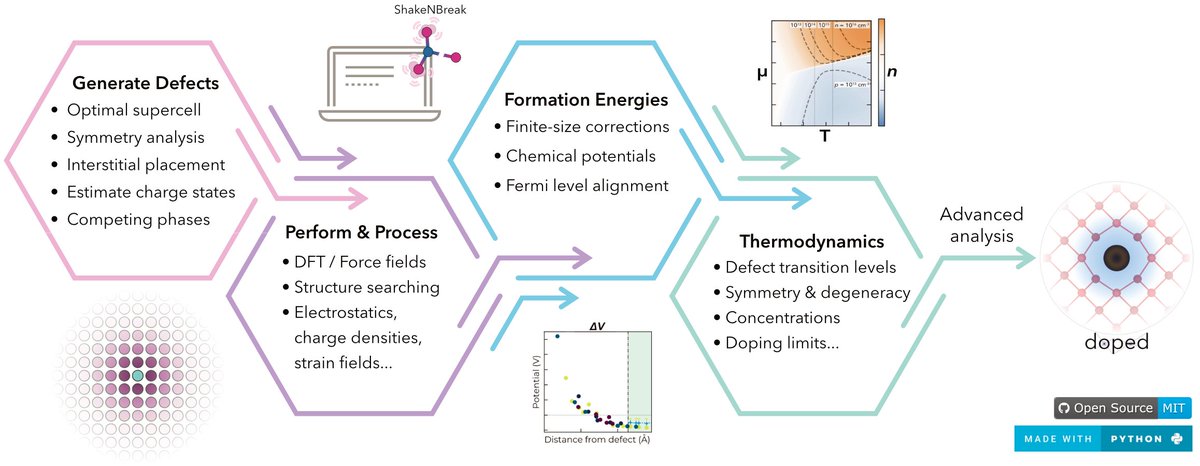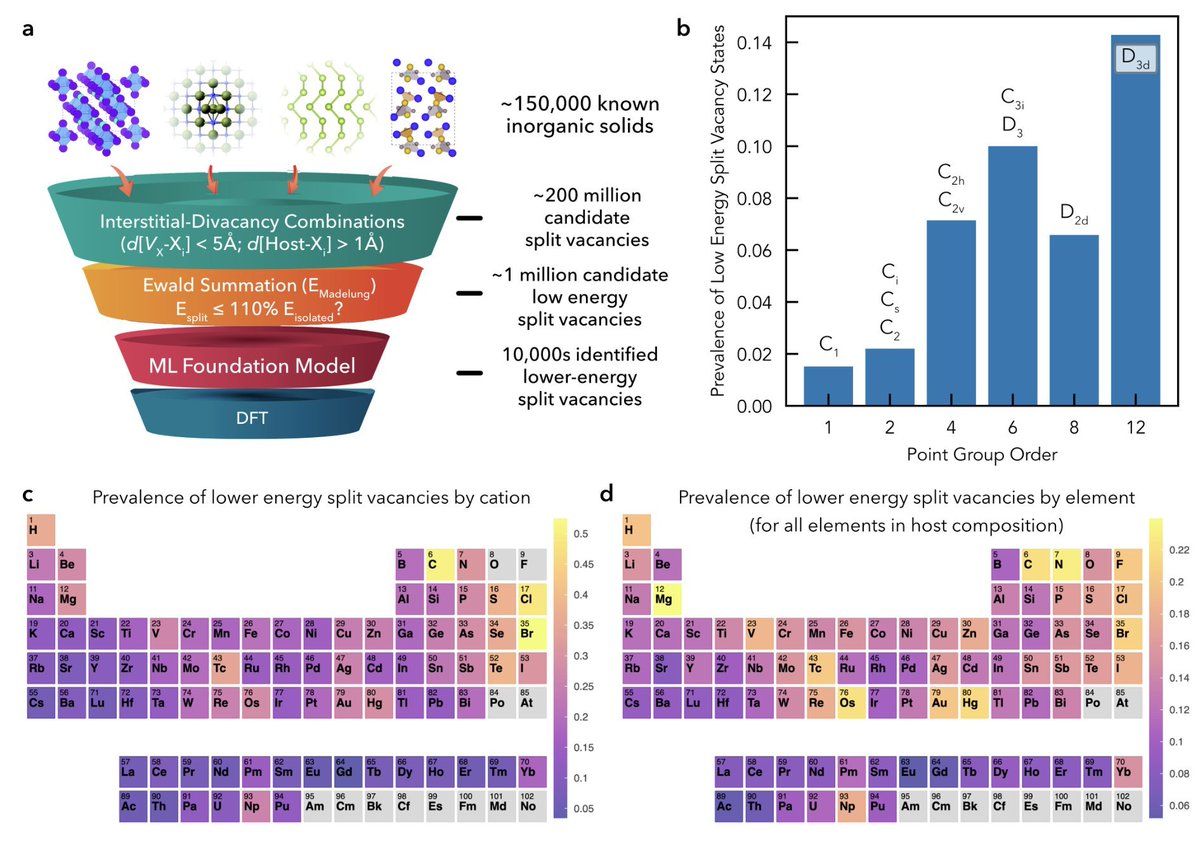
Seán Kavanagh
@Kavanagh_Sean_
Followers
2K
Following
14K
Media
168
Statuses
1K
Theoretically a material scientist at Harvard (@HUCEnvironment) 🧪👨🔬 via @CDT_ACM @ImpMaterials @UCLChemistry, @tcddublin 🇮🇪 Figuring it out as we go... ♟
Boston, US
Joined June 2019
Our comprehensive i̶n̶-̶h̶o̶u̶s̶e̶ defect modelling python package 𝙙𝙤𝙥𝙚𝙙 is now fully live!⚛️. 𝙙𝙤𝙥𝙚𝙙 implements the defect.simulation workflow in an efficient and user-friendly, yet powerful and fully-flexible, manner. See 🧵 for features (1/n).
1
22
102
RT @Materials_Intel: Last month, we released a major update to the NequIP framework that fully leverages PyTorch 2.0 compilation for MLIPs.….
github.com
NequIP is a code for building E(3)-equivariant interatomic potentials - mir-group/nequip
0
8
0
@kanta_v Other computational packages used include ShakeNBreak, CarrierCapture.jl, nonrad, sumo and pymatgen.
0
0
1
@kanta_v Using the recently-added site competition handling for concentration analyses in doped.
doped (3.1.0) and ShakeNBreak (3.4.2) have had new releases!. - Streamlined chemical potential handling.- Auto-compatibility checks w/competing phases calculation settings (as for defects) – common pitfall.- Directly parse spin magnetisation (incl SOC).
1
0
0
Check out @kanta_v's work investigating the mechanism by which Al doping suppresses non-radiative recombination in SrTiO₃, to allow high quantum efficiencies and champion photocatalytic peformance! 📈. Spoiler; it's all in the orbitals 🛰️🤙
欠陥耐性制御に関する論文が@J_A_C_S に掲載されました。高活性光触媒SrTiO3:Alにおける、Alドープの役割を第一原理計算から調べ、Alはキャリアのトラップ準位の原因となる軌道相互作用を非活性化し、欠陥耐性を高めることを明らかにしました。@Kavanagh_Sean_ @lonepair.
1
2
18
RT @rdrons: Proofs are getting worse and worse. What the largest for-profit scientific publisher (with 8 letters) has been doing for years,….
0
5
0














